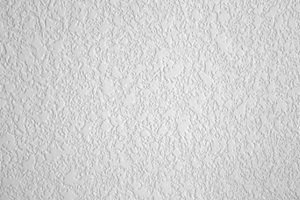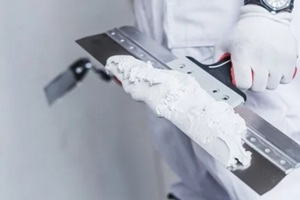 New construction and long-standing homes and businesses can benefit from thoroughly prepared spaces for decoration and finishing. Drywall forms the backbone of most interior spaces, serving as the underlying material face of the walls and ceilings.
New construction and long-standing homes and businesses can benefit from thoroughly prepared spaces for decoration and finishing. Drywall forms the backbone of most interior spaces, serving as the underlying material face of the walls and ceilings.
Preparing these drywall surfaces properly can be the difference between creating a seamless and beautiful visual identity and coping with frustrating, unsightly aesthetics.
Residential customers and business owners interested in drywall finishes for their homes or commercial spaces should learn about the power of primer and how proper preparation impacts drywall finish quality so that they can achieve the best outcomes when they decorate their space with custom wall coverings.
What Is Drywall Primer?
Drywall is the material that makes up walls, and it typically comprises gypsum alongside clay, paper, and other additives.
These panels alone are not large enough to create an entire wall using only one piece, so they must be bound together using tape and joining compound to create a wall or ceiling.
As a result, the surface of the drywall can be slightly uneven, both in texture and color.
Applying a primer over the bare drywall material can eliminate some of this inconsistency. Drywall primer is a paint-like substance that soaks directly into the drywall materials, forming a more consistent topcoat.
Primer made for drywall is slightly different than primer made for paint in multiple ways, including how dense their pigment is. This allows the primer to cover the underlying drywall and its imperfections more completely.
Why Does Drywall Primer Matter?
Priming drywall can be a tempting step to skip to save time and money — after all, isn’t the wall simply going to be covered with paint or a wall covering anyway?
 Even if this is the route you intend to take with your residential or commercial space, using drywall primer is necessary.
Even if this is the route you intend to take with your residential or commercial space, using drywall primer is necessary.
Thanks to its packed pigment, the primer creates a uniform surface, so the differing colors of the drywall, joints, tape, and other elements will not show through individually.
Additionally, because primer soaks into drywall materials rather than merely creating a shell on top, the ridges and connections between drywall panels become less obvious after they have been coated with primer.
What Happens When Drywall Is Not Prepared Properly?
Failure to properly treat drywall with primer before moving on to decoration can have unsightly effects on your interior spaces.
For instance, those trying to paint may notice that the paint color they have selected does not play well with the underlying drywall color, and they might still be able to see strips of tape or joint compound underneath the paint.
Painting a room that has not been primed may require substantially more coats in order to finally cover the color differences of the drywall beneath, increasing the cost of the project and delaying the timeline to completion as each coat needs to fully cure.
For those looking to utilize wall coverings, the quality of the underlying drywall is essential. Even thick wall coverings can still show inconsistencies in the walls below.
Without a primer to make the drywall surface flat and smooth, your wall coverings may come out bumpy, or you may still be able to see the joints between drywall segments.
These unsightly blemishes may interfere with your wall covering designs, creating ridges and bumps through your company logo or casting unusual shadows along your walls.
The finish of a drywall surface is categorized by levels, which describe how smooth the underlying material is thanks to priming and careful taping or mudding.
To get the most out of customized wall coverings, drywall should be of at least level 4 quality at a minimum.
 This level has undergone multiple applications of joint compound, not only over the tape and joints but over any screws and other hardware that may stick out.
This level has undergone multiple applications of joint compound, not only over the tape and joints but over any screws and other hardware that may stick out.
However, the best results are achieved by bringing your drywall up to at least level 5 finish quality. This creates a uniform surface to which your wall coverings can cling smoothly.
Upgrade Your Aesthetic With High-Quality Wall Coverings
Decorating your business or residential space is an important decision, from how the colors you choose will impact a person’s mood to how high-quality coverings can reduce noise for greater comfort.
However, the quality of these installations starts with the walls on which they will be applied, and that means attending to proper drywall finishing and priming.
The experts at Tree Towns can help you understand what type of priming your space needs in order to see the best results with your custom wall coverings and what types of coverings will work best on the walls that you have.
Contact Tree Towns to explore your options and share your vision for your space so that we can help you bring it to life.
